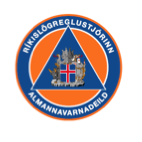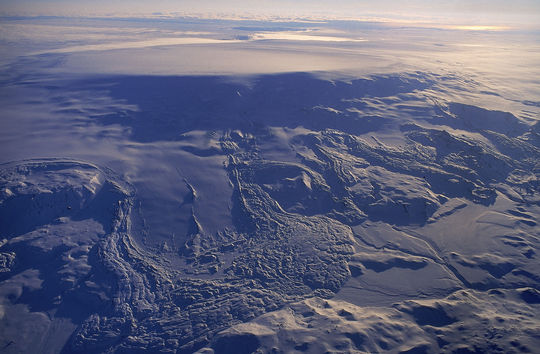 The lava eruption on Holuhraun continues. Lava flows northward from the eruption site. At 20:00 UTC yesterday, the lava extended over a 3-km2. This corresponds to a magma discharge of 300 to 500 cubic meters per second. From observations yesterday evening, the volume of erupted lava is between 16 and 25 million cubic meters. The eruption has not created any ash-fall.Gas and steam rises to a couple of hundred meters above the eruption site, extending up to 1,200 m downwind. In connection with the FUTUREVOLC project, a gas monitoring station has been set-up near to the eruption site. Gas measurements indicate a high level of sulphur dioxide (So2). People could be exposed to highly dangerous gas levels close to the eruption. It is essential that those working near the eruption site are equipped with gas sensors and gas masks.
The lava eruption on Holuhraun continues. Lava flows northward from the eruption site. At 20:00 UTC yesterday, the lava extended over a 3-km2. This corresponds to a magma discharge of 300 to 500 cubic meters per second. From observations yesterday evening, the volume of erupted lava is between 16 and 25 million cubic meters. The eruption has not created any ash-fall.Gas and steam rises to a couple of hundred meters above the eruption site, extending up to 1,200 m downwind. In connection with the FUTUREVOLC project, a gas monitoring station has been set-up near to the eruption site. Gas measurements indicate a high level of sulphur dioxide (So2). People could be exposed to highly dangerous gas levels close to the eruption. It is essential that those working near the eruption site are equipped with gas sensors and gas masks.
Seismic activity in the area in still stable. Over 500 earthquakes have been recorded since midnight. Most of the seismicity is occurring on the northern end of the dyke intrusion, covering a 15-km-long region that extends partly beneath Dyngjujökull and north of the ice margin. 8 earthquakes over M3,0 have been recorded since midnight with over two larger then M5,0 near the Bárðarbunga caldera.
According to the latest GPS observations, horizontal ground movements continue in response to the dyke intrusion. There is no clear sign of a pressure decrease in the dyke intrusion in connection with the ongoing eruption, although there are irregularities in GPS displacements at nearby stations. The northern extent of the dyke intrusion has not changed to any great extent.
Precautionary measures
Considerable volume of SO2 rises from the lava. It is essential for those who work in the area to have gas detectors and gas masks available.
All previously road closures are still in effect. All roads leading to the volcanic site are closed based on the risk of a flood if an eruption will start under the glacier.
The Icelandic Met Office has lowered the Aviation Colour Code for Bárðarbungu down to orange. Askja is still on yellow.
ISAVIA, the Icelandic Air Traffic Control, has revoked all restrictions on flight over the area. All airports in Iceland are open.
Hazard assessment
It remains unclear how the situation will develop. Four scenarios are still considered most likely:
- The migration of magma could stop, resulting in a gradual reduction in seismic activity and no further eruptions.
- The dyke could reach the Earth’s surface causing another eruption, possibly on a new fissure. Lava flow and (or) explosive activity cannot be excluded.
- The intrusion reaches the surface and another eruption occurs where either the fissure is partly or entirely beneath Dyngjujökull. This would most likely produce a flood in Jökulsá á Fjöllum and perhaps explosive, ash-producing activity.
- An eruption in Bárðarbunga. The eruption could cause an outburst flood and possibly an explosive, ash-producing activity. In the event of a subglacial eruption, it is most likely that flooding would affect Jökulsá á Fjöllum. However it is not possible to exclude the following flood paths: Skjálfandafljót, Kaldakvísl, Skaftá and Grímsvötn.
Risk of floods
There is still a risk of flood in the area. This is based on the fact that an eruption may begin under the Vatnajökull glacier, either in Dyngjujökull or the Bárðarbunga caldera. The active fissure in Holuhraun may also open to the south and reach Dyngjujökull glacier.
Cooperation and coordination
The coordination of the operation and information continues at the National Crisis Coordination Center. This morning there was a meeting with the Icelandic Civil Protection Scientific Advisory Board. After the meeting a teleconference was held with District Commissioner in Húsavik to coordinate measures. At 13:00 UTC today, TF-SIF flew over Holuhraun and north-west Vatnajökull with scientists from the Icelandic Meteorological Office and the University of Iceland, together with a representative from the Icelandic Civil Protection. Observations from this flight will be reported in later briefings.
A media unit is placed at the National Crisis Coordination Center, providing information and dealing with media requests. The email address is info@sst.is Tel: +354-5702644/43. The website on safe travel in Iceland is updated regularly: www.safetravel.is

